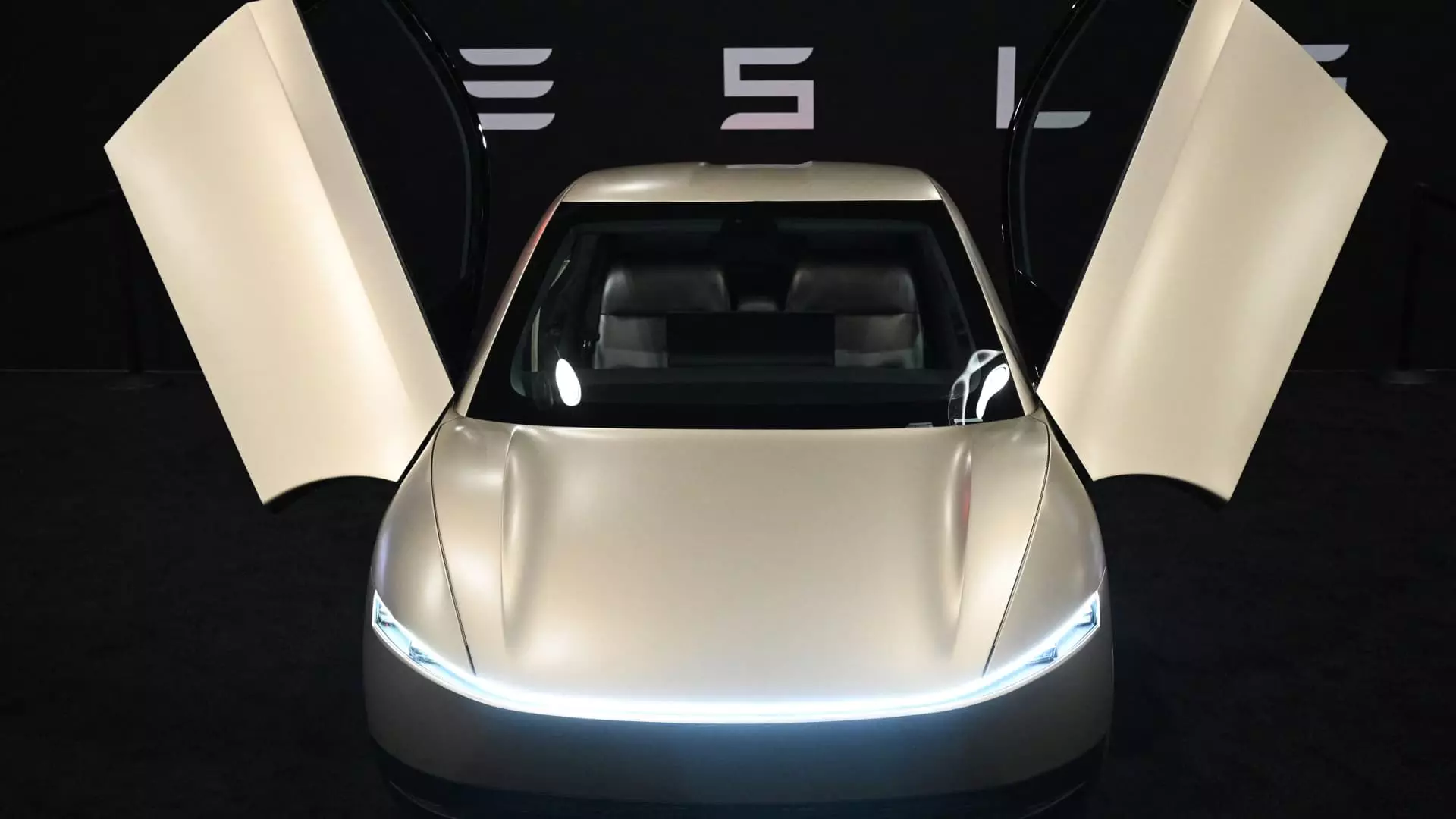For nearly a decade, Elon Musk has dazzled investors with promises of a fleet of Tesla vehicles that could whisk passengers away in robotaxi mode, requiring minimal human intervention. Yet, as we stand in early 2025, those dreams still linger in the distance, shrouded in uncertainty. Tesla’s boastfully branded “Full Self-Driving” (FSD) system is now well-known as a complex array of features that operate under a strict banner of “supervised” driving. While it may manipulate steering and braking with impressive fluidity, calling it fully autonomous is as misleading as branding a bicycle as an airplane.
In an era when other tech companies are edging closer to true automation in various sectors, Tesla seems stuck in a quagmire of semi-functionality, warning its users to keep their hands firmly on the wheel. Ironically, many Tesla owners seem blissfully intent on ignoring this guidance, further complicating the narrative of a groundbreaking leap in automotive innovation. The reality is that the “self-driving” functionalities are more akin to advanced driver-assistance systems that require constant vigilance—an essential aspect that Musk seems to neglect in his public presentations.
Safety Concerns Amidst Aspirations
The juxtaposition of Tesla’s revolutionary marketing and actual performance manifests in mounting safety concerns. Incidents involving the company’s Autopilot and FSD systems have sparked nationwide debates about public safety and accountability on the roads. Reports of injuries and fatalities tied to these systems have led to calls for more stringent regulations and transparency regarding the technology’s capabilities. There’s a stark contrast between the zeal of Tesla aficionados and the caution exercised by industry experts who see the technology for what it is—an ambitious work in progress that risks human lives every time it hits the road.
Industry veteran Guy Mangiamele aptly points out that while Tesla’s systems perform “amazingly well” in many scenarios, they are prone to serious failures that could lead to catastrophic consequences. This duality raises critical ethical questions: is it acceptable to market a product that can just as easily save lives as it can endanger them? The unfortunate reality is that existing drivers may be tempted to rely more on these systems than is prudently advisable, driven by Musk’s relentless promotion of the technology.
The Financial Fallout: A Company in Crisis
Critics might argue that Tesla is not quite the technological titan it once portrayed itself to be, especially with the recent economic downturn reflected in its plummeting stock prices. A staggering 36% decline in the first quarter of 2025 highlights the disconnect between hype and genuine public trust. Additionally, initial reports indicate a concerning drop in vehicle deliveries, signaling that prospective buyers are increasingly turning away from the brand. The flow of pre-owned Teslas onto the market at record levels paints an even starker picture—customers are not just hesitant; they are actively looking for alternatives.
Yet, the narrative is complicated by Musk’s ever-ambitious goals, which include an impending “robotaxi launch” in Texas. But as the date looms closer, skepticism swells. Numerous industry experts have expressed doubt about whether FSD can even be safely used in an unsupervised capacity in the timeframe Musk has suggested. This creates a dichotomy between the visionary he wishes to be and the reality he seems to face—a reality that may not be as favorable as he presents it.
The Political Landscape: Complications Abound
Elon Musk’s recent political maneuverings, particularly his involvement with the Trump administration, have added another layer of complications to Tesla’s image. His endorsements and statements have sparked protests and backlash from various community groups, further complicating Tesla’s standing in a market that increasingly prioritizes social responsibility. The connection of Tesla to more than 280,000 federal layoffs as part of Musk’s intentions to streamline government operations creates an ethical gray area for consumers who may prefer brands that embody a different set of values.
As Tesla finds itself at the intersection of technological innovation and public scrutiny, political connotations surrounding its operations could deter potential buyers who prioritize social concerns. The faith that customers once had in Musk’s vision is being tested, with environmentalists and moderates questioning whether investing in Tesla remains a suitable choice amid its increasingly controversial corporate governance.
Tesla’s journey to become the revolutionary automotive force Musk envisions remains fraught with challenges—technological limitations, safety concerns, economic risks, and political entanglements. In a world that yearns for innovation, Tesla’s reality may serve as a cautionary tale about the dangers of over-promising and under-delivering.

